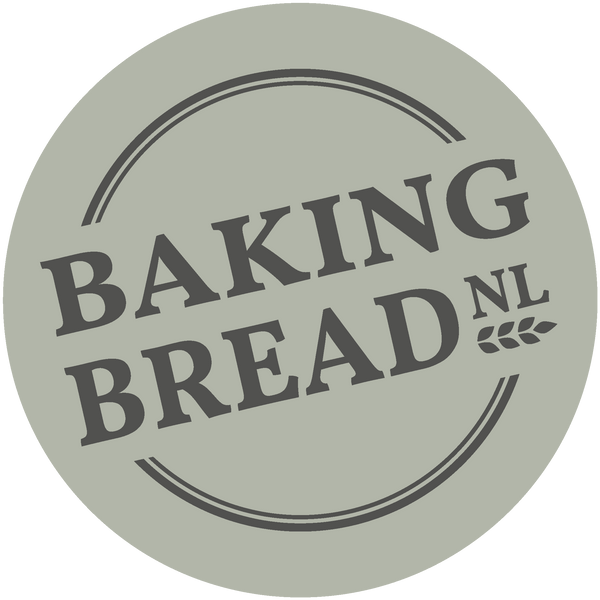What is a starter culture.
The starter culture is a mixture of (wholegrain) flour and water. Every type of flour contains a variety of natural yeasts and bacterial spores. When wheat flour comes into contact with water, the naturally occurring enzyme amylase breaks down the starch into sugars which sourdough’s natural yeast can metabolize. With sufficient time, temperature, and refreshments the mixture develops a stable culture. This culture will cause a dough to rise if the gluten has been developed sufficiently. The bacteria ferment starches that the yeast cannot metabolise, and the byproducts are metabolised by the yeast which produces carbon dioxide gas, leavening the dough.
What you will need to build your own starter.
Kitchen-scale
One of the most important things you will need is a good kitchenscale. working with sourdough can not be done with teaspoons and cups. It has to be done with a proper kitchenscale, bread making is kind of like science a pinch and a little bit don’t exist here.
Glass jar
I prefer storing my starter in a glass jar. I use a 1 liter mason jar to make larger amounts of starter when I need too, but normally i would use any other size of glass jar that my starter will fit in.
Mixing spoon or spatula
I use a spatula with a long wooden handle and a small silicone head, this gives me the opportunity to reach to the bottom of the jar and mix the starter well inside the jar.
Whole wheat flour (if possible stonemilled)
I am so lucky that there i have different mills close by that mills grains on these big millingstones, the stone milling helps your flour by spreading the right bacteria for making your own starter. all you need to start making your own starter.
all you need to start making your own starter.
How to build your own starter.
You don’t need a lot of special ingredients for this one. Plain flour and water will do the job just fine. But I recommend to use a whole grain flour and if you can lay hands on it try to get stone milled flour from a local mill. As these contain more of the right bacteria we need to build a starter.
I also prefer to start with a rye starter and convert it (or a part of it) to a wheat starter. When my starter gets a little less active after a while I will feed it a little bit of rye to just to boost its activity.
Making sourdough starter takes about 5-7 days. Each day you “feed” the starter with equal amounts (in weight) of flour and water. As the starter grows stronger, it will become more bubbly and sour-smelling. The whole process takes about 5 days, but can take longer depending on the conditions in your kitchen. As long as you see bubbles and signs of yeast activity, continue feeding it regularly.
How to make your own starter at home.
Day 1: Put 50gr whole wheat flour with 50gr cool water in a glass jar. Stir everything together thoroughly; make sure there’s no dry flour anywhere. Cover the container loosely and let the mixture sit at warm room temperature (about 70-75°F) for 24 hours.
Day 2: You may see no activity at all in the first 24 hours, or you may see a bit of growth or bubbling. Either way, discard half the starter and add 25gr whole wheat flour and 25gr lukewarm water. Mix well, cover, and rest at room temperature for 24 hours again.
Day 3 & 4: By the third day, you’ll likely see some activity bubbling; a fresh, fruity aroma, and some evidence of expansion. It’s now time to begin two feedings daily every 12 hrs. For each feeding, weigh out 50gr starter.
Add 50 grams of flour and 50 grams water to the starter. Mix the starter, flour, and water, cover, and let the mixture rest at room temperature for around 12 hours before repeating.
This one (day 3) is not ripe enough yet. It will take a few more days to get good activity
Day 4: Weigh out 50gr starter, and repeat the previous step but now with 100gr flour and 100gr water.
Day 5: Repeat day 4, By the end of day 5, the starter should have at least doubled in volume. You’ll see lots of bubbles. Also, the starter should have a tangy aroma (pleasingly acidic, but not overpowering). If your starter hasn’t risen much and isn’t showing lots of bubbles, repeat discarding and feeding every 12 hours on day 6, and day 7 and so on as long as it takes to create a vigorous (risen, bubbly) starter.
When your starter is ready to bake it should pass the float test. Take a tablespoon of matured starter and drop it into a bowl with some water. If it floats it is ready to use.
I hope this give a good idea of how to start your own sourdough starter at home. Wish you all happy baking with your own starter.
 nice and bubbly, ready to use.
nice and bubbly, ready to use.


3 reacties
mooi recept, je posts zijn zo inspirerend dat ik het binnenkort maar eens ga proberen. Dank voor het delen!
How nice to read this, I hope your sourdough journey is going well and that you’re able to eat bread again
Thank you for sharing. I love breads but cannot eat commercial bread any longer. Homemade sourdough doesn’t hurt my stomach – your videos have inspired me to try my hand at baking again.